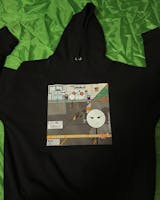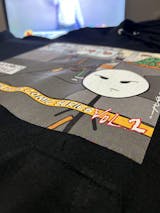DTF printing technology (direct to film) offers unique opportunities to produce high quality prints. This method is becoming more and more popular. It has become increasingly used especially in the custom clothing industry and decoration industry. However, as with other printing methods, some difficulties are encountered in the DTF transfer system. Due to these problems, products with very low print quality may emerge. In order to produce high quality products thanks to this technology, it is necessary to eliminate the problems.
Custom DTF printing is one of the popular printing methods in the custom clothing industry. As technology develops, machines that can produce better quality work are produced over time. Understanding the DTF printing process minimizes any problems that may arise.
DTF transfer technology is carried out with specially designed printers. Many methods such as resin, ink and heat press are used. With the special software, designs prepared for printing are transferred to a film. These films are then transferred to the fabric or a surface with heat press method. Although this process sounds quite simple, there are many points to pay attention to.
What to Consider in DTF Printing
DTF transfer technology provides superior color vibrancy and quality. Mass production is also carried out quite easily in this printing system, which is also very assertive in terms of durability. Thanks to its increasing popularity, all designers who want to achieve extraordinary results prefer DTF technology first when choosing waste printing technology. DTF provides great freedom to designers and is very influential on clothing fashion.
DTF printing systems with custom heat transfer enable high quality and vibrant printing designs. But of course some difficulties may be encountered.
- Print Quality Problems: Pixelated or blurry prints can occur due to poor quality designs. Therefore, be careful to use high-resolution designs and images.
- Inconsistent Colors: Sometimes the desired colors may not be obtained due to the colors of DTF machines not being well calibrated. Therefore, it is necessary to check the color casts of the machine.
- Ink Stains: This is a frequently encountered situation in DTF printing technology. It may occur when the ink does not dry properly. For this reason, it must be waited for it to cool down both after the design is transferred to the film and after it is transferred from the film to the fabric.
- Printing and Heat Press Setting: Heat press and film peeling process is one of the most important stages of DTF printing. Therefore, it is important to calibrate at what temperature setting and in how many seconds the raid will take place. For this, test prints must be made.
- Ink Density: If too much ink is used, the printing layer may be thick and may cause poor results. Therefore, if the ink density is too high, situations such as smearing in the print may occur. If little ink is used, prints may be faded.
- Printer Settings: Printer settings are extremely important in terms of print quality. Therefore, it is important to set the printing resolution correctly.
Maintenance of DTF Printers
This printing system, which stands out thanks to DTF printing technology, which has easy production options such as custom gang sheet, is realized through special printers. Printers, which are one of the DTF printing materials, should be cleaned carefully and maintained regularly.
Maintenance and quality of materials are important in DTF printing technologies. DTF prints are made through special printers. The cartridges, mechanism and parts of printers specially designed for this printing system must be cleaned carefully and checked from time to time. Yazıcı, one of the main parts of the DTF transfer system, is of great importance.








